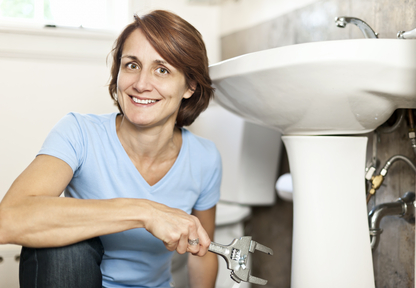Exactly how to Prevent a Water Damaged Bathroom
Exactly how to Prevent a Water Damaged Bathroom
Blog Article
Just how do you really feel about Common Causes of Water Damage in a Bathroom?
The bathroom is exceptionally prone for damp accumulation and possible water damages because of the frequent use water in it. This article uses easy examination methods to help finding water damage threats.
The regular use water in the shower room makes it extremely prone for moist buildup and possible water damage. By evaluating it frequently, you can reduce water associated problems.
The following collection of inspections is very easy to perform and also ought to be done as soon as in every three months in order to maintain your bathroom in good shape and also to prevent possible water damages triggered by the bath tub, the shower, pipe joints and also plumbing, sinks, cabinets, and the bathroom
Do not forget carrying out these examinations and also be extensive while doing them. Remember that these easy assessments can conserve you a lot of money by giving early signs for water damage
Bathtub as well as Shower
The shower and also bathtub need unique focus and maintenance. Examine the tiles as well as replace if broken. Make certain that there is no missing cement in between the floor tiles. Evaluate and replace cracked caulking at joints where the walls meet the floor or the bathtub. Clogged drains and also pipes issues will stop the bath tub from drying as well as might show significant problems beneath the tub. Consult with a professional right away to avoid architectural damages. Take notice of stainings or soft locations around the bathtub walls as they may indicate an internal leak.
Plumbing
Signs for water damage are hard to spot because many pipes are set up inside the walls.
Pay special interest to flooring as well as walls wetness as well as stains as they might show an invisible plumbing trouble. Examine dampness degrees in adjacent spaces also.
Sinks as well as Cabinets
Sinks as well as cupboards are subjected to wetness and also moisture day-to-day and also are commonly ignored. Examine routinely under the sink and on the counter top above it. Repair any drip in the trap as it might recommend drain problems. Check out the sink, sluggish draining pipes may show a blocked drain. Change sink seals if they are split or loose.
The Commode
The commode is a susceptible water junction. Check the water lines and also look for leaks around the commode seat, in the pipe, and under the water container. If you find any indicators of wetness on the floor around the commode, check for leaks in the toilet edge and container seals.
Know that hanging toilet dish deodorants raises the possibilities for clogs.
Water Damage Signs In The Bathroom To Avoid Cleanup
Musty smell
This is one of the easiest signs to catch because musty smells are so odorous. The damp, earthy, moldy smell should be a big red flag. The smell will develop when moisture gets trapped in surfaces, and begins to facilitate mold growth. Leaking pipes under cabinets, inside walls, and behind shower fixtures will cause moisture to stay trapped and not dry, which will lead to mold growth and spread. As soon as you notice any musty smells in your bathroom, have it checked for hidden water damage and cleanup signs.
Visible mold
If the smell isn’t there to give it away, sometimes you will actually see mold growth. Finding mold in your bathroom is a serious problem, because mold is very harmful to your health. By the time mold growth is visible, it also means that water damage has already occurred and been present for some time. The only way the mold problem can be resolved is to find the source of the moisture and get it stopped. To safely and adequately remove mold, you need to have professionals handle the remediation. Do not waste any time in getting mold problems addressed, fixed, and sanitized so that you can protect you and your family from the many respiratory symptoms caused by mold exposure.
Damaged floors
Bathroom floors should be able to withstand some exposure to water while still remaining in good condition. However, when excess exposure or water leaks occur, they will begin to damage even the most water-resistant flooring. If you notice any cracking, bubbling, staining, or warping on your bathroom floors, there is probably a water leak somewhere causing the distortion. If you notice areas of the floor have become softer, or even have a spongy feeling, there is probably damage to the subfloor. Subflooring is typically made up of plywood. When plywood is exposed to water or moisture, it will absorb it. Once it has become saturated, the weight of the excess water will cause the wood to swell and soften. Check the floors in your bathroom frequently to catch any of these sings before they lead to damaged subflooring.
Changes on walls
When water leaks behind walls, it will cause changes in the drywall. Peeling plaster, blistering paint, and soggy wallpaper are all good indicators that excess water is building up behind the wall. Water leaking behind drywall will cause it to swell and be soft to the tough. If you start to notice gaps along the trim of your walls, or where tile meets the wall, it could also be a strong indicator that there is a leak behind the wall. Any changes, distortion, or damage on the walls should be evaluated as soon as you notice it to prevent further water damage and cleanup.

We had been shown that report on Common Causes of Water Damage in a Bathroom from a good friend on a different web address. If you liked our page kindly don't forget to share it. Thank you so much for your time invested reading it.
Visit My Site Report this page